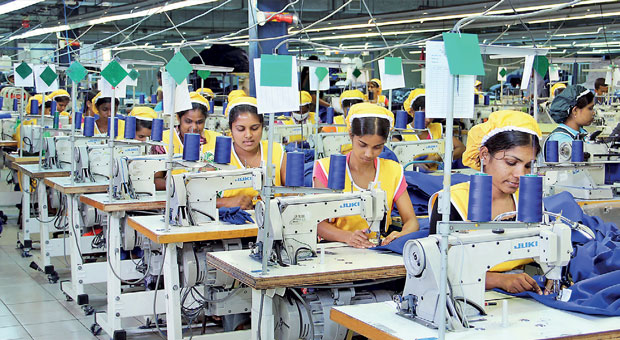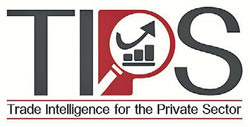20 Apr 2017 - {{hitsCtrl.values.hits}}

 By Ceylon Chamber of Commerce Economic Intelligence Unit
By Ceylon Chamber of Commerce Economic Intelligence Unit
After years of tepid growth and a rather slow 2016, the global economy is on course for its best performance in several years, according to the latest data from the International Monetary Fund (IMF). This is despite the trade tensions and looming geopolitical threats, said the IMF ahead of its Spring Meetings taking place in Washington D.C.
this week.
The IMF nudged up its forecast for world growth in 2017 by 0.1 percent to 3.5 percent. If this growth is achieved, it would be the fastest growth in five years. IMF Chief Economist Maurice Obstfeld noted, “Acceleration will be broad-based across the advanced, emerging and low-income economies building on the gains we have seen in both manufacturing and trade.”
In the March edition of the ‘Monthly Economic Update’ of the Ceylon Chamber of Commerce Economic Intelligence Unit, we noted that growth in some of the key developed markets is beginning to turn around and that now the main risk for the global economy was the rise of protectionism (and its impact on trade flows) amidst an anti-globalisation sentiment spreading through many countries.
The outlook for US growth remained unchanged from its existing forecast of 2.3 percent (which was already up from 1.6 percent from last year). But notably, it notched up the growth forecast for five of Europe’s largest economies. The UK’s bump was the biggest, up 0.5 percent to 2 percent. Meanwhile in China, the government stimulus has pushed China’s growth forecast up 0.1 percent to 6.6 percent and Japan’s by 0.4 percent to 1.2 percent.
China, stabilization after stimulus?
The other economic data out of China indicates that the economy is stabilizing, amidst a rebalancing of activity away from investment and towards consumer spending. The official manufacturing index for China, the Caixin Manufacturing PMI (Purchasing Managers’ Index), rose to 51.7 in February 2017 compared to 51.0 in January 2017, a post-2012 high. Manufacturing activity rose for the eighth consecutive time due to a faster rise in output and new orders.
Standard Chartered PLC’s Small and Medium Enterprise Confidence Index rebounded to 60 this month, the highest in almost two years. Sub-indexes tracking sales, production and profitability all strengthened, while the outlook for investment softened. Meanwhile, another survey-based gauge of sales manager sentiment picked up to a 20-month high of 52.2
in March.
US market positive but policy uncertainty looms
The outlook for the US economy looks positive for the immediate term, with job growth continuing for 77 straight months to February. In an acknowledgement of this continued economic strengthening, the Federal Reserve raised interest rates once more last month, amidst positive economic activity and jobs data. American consumer and business sentiment have been upbeat on President Trump’s proposed tax cuts and regulatory easing and this has been reflected in a bullish stock market lately.
However, the timing and the actual path of these tax cuts and deregulation is unknown. The pull back of the new healthcare bill (aimed at repealing and replacing the current ‘Obamacare’ law) due to the lack of sufficient votes to support its passing indicates that the Trump administration will not find it as easy as expected to implement some of his so-called pro-growth fiscal and regulatory policies.
Yet, worries around trade protectionism and possible retaliation by trade partners are emerging – especially measures that could hurt exporters to the US. Just this week, President Donald Trump signed the ‘Buy American, Hire American’ executive order. Apart from the skilled worker visa programme that this order deals with, on the trade front, it aims to push federal agencies to give greater preference to domestically
produced products.
Under the new executive order, there will also be a 220-day study of US trade agreements that give foreign companies the right to be treated as domestic companies. Already there have been warnings by business groups on the negative implications of such action, for instance, trade retaliation. The US Chamber of Commerce has warned, “Expanding Buy American programmes risked other countries doing the same and closing their markets to US products.”
Eurozone shows green shoots of recovery
As reported in our March ‘Monthly Economic Update’, headline data from the Eurozone indicates positive momentum on the region’s economic recovery. The euro area gross domestic product (GDP) has posted 15 consecutive quarters of growth, while unemployment has reached its lowest level since 2009 and private sector growth touched a six-year high in February. The February composite output PMI stands at its maximum since April 2011 and worries over deflation appear to have abated (and in fact, inflation is set to edge up closer to 3 percent this year).
Meanwhile, consumer confidence, despite a slight decline in February, has so far remained undeterred by the elevated political uncertainty. The political uncertainty continues amidst a slew of elections across the region, the rise of populist and protectionist political sentiment, a lack of consensus on a future bailout package for Greece and concerns on the future of trade in the European Union (EU) following Brexit.
A good signal of the region’s economic recovery will be if the European Central Bank (ECB) does not renew its stimulus lending programme due to expire this month, called the Targeted Longer-Term Refinancing Operations (TLTROs).
Sri Lanka’s external sector under stress
Amidst this changing global picture, Sri Lankan exports have a good opportunity now to leverage on this economic recovery, particularly in key markets like the US and Europe that matter to us. The recent export performance, however, has been poor – but of course this is partly due to the weak global conditions. According to the latest available trade data from the Central Bank of Sri Lanka (CBSL), Sri Lanka’s exports edged up by 4.7 percent in December 2016 (the latest month for which figures are available) to
US $ 859 million.
The year-on-year (YoY) increase in exports seen in August/September 2016 failed to be sustained and the increase showed a secular slowdown throughout the remainder of 2016 and moving into negative territory in November. December saw this trend snap and exports ended the full year at US $ 10.3 billion, which was 2.2 percent lower than the full year 2015. Of the major export categories, rubber products and tea exports showed an increase in December from a year earlier, but vegetables and food, beverage and tobacco saw sharp declines.
Meanwhile, imports continued to gallop in double-digit growth for the third consecutive month, up by 10.4 percent to US $ 1.8 billion in December (but at a relatively slower pace than in the previous three months). The full year 2016 posted a 2.5 percent larger import bill than in 2015, at US $ 19.4 billion. Consumer goods imports saw a decrease during the full year 2016 of 8 percent, while intermediate goods and investment goods (which include motor vehicles) showed increases.
Sri Lanka’s fuel imports spiked by more than 50 percent in December 2016, compared to a year earlier. Vehicle imports slowed down, following the new loan-to-value (LTV) restrictions introduced by the CBSL. The trade deficit widened by 16 percent in December compared to a year earlier and for the full year 2016 is widened by a sharp 8.4 percent to US $ 9.09 billion.
If the current signs are of things to come and the global economy moves into a phase of sustained recovery over the remainder of this decade, Sri Lankan exports have a strong opportunity to take advantage of this. Especially as exports are still largely reliant on traditional markets of the US and EU, any recovery in these markets will benefit Sri Lankan exports. Yet, in order to be truly resilient, the focus must also be on entering into new markets and enhancing the competitiveness of our exports.
(The ‘Trade Intelligence for the Private Sector’ (TIPS) initiative by the Ceylon Chamber of Commerce aims to help the private sector be aware of international trade issues and changing global conditions that affect trade)
25 Nov 2024 53 minute ago
25 Nov 2024 1 hours ago
25 Nov 2024 1 hours ago
25 Nov 2024 2 hours ago
25 Nov 2024 3 hours ago